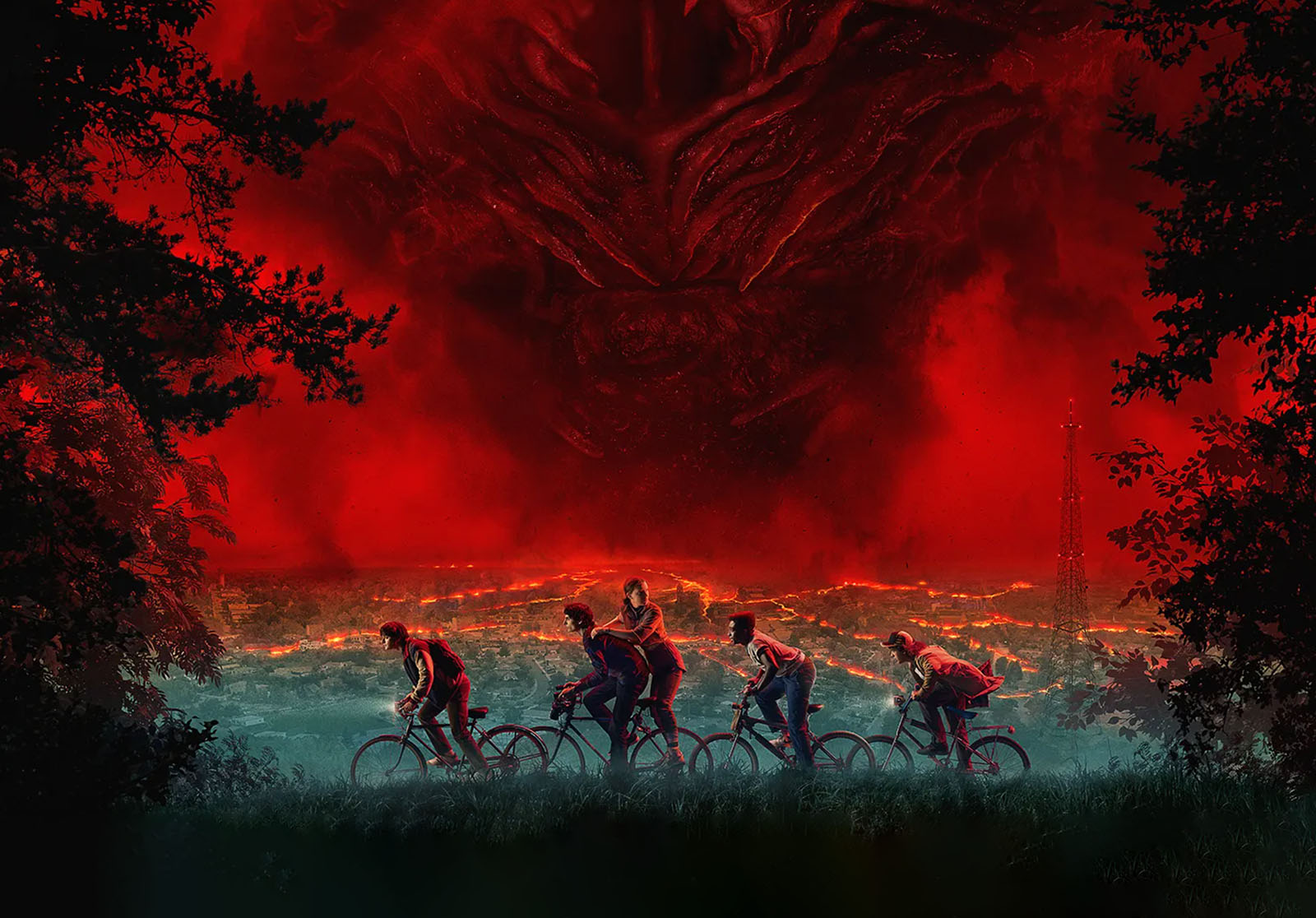PROTECT YOUR DNA WITH QUANTUM TECHNOLOGY
Orgo-Life the new way to the future Advertising by AdpathwayWe don’t always realize the damage our words can do to others. Lately, I’ve been thinking about how rarely affective correspondences are taken into account when we write—especially in academic settings. In scholarly writing, we’re trained to prioritize factual accuracy, citational rigor, and structural stability. Yet, in doing so, we often relegate sensitivity and playfulness—what María Lugones would call the capacity for loving perception—to a secondary plane. It saddens me to recognize the implicitly violent ways of address embedded in how we write, how we relate, how we communicate in these institutional forms. That contradiction feels urgent to name. After all, if we claim to be working toward transformation, shouldn’t the very act of writing embody that transformation—refusing the agonistic habits of domination, the precision that wounds, the control disguised as clarity?
We forget that the messages we send into the world are not inert: they carry life energy. Our words can warm, kindle, or scorch, depending on the manner of their release. Writing, after all, is a form of metamorphic breathing—our words are received by other nervous systems, other pulsating heart chambers. What might it mean to write in a way that touches, that imbues with vibrant energy rather than defends? To let language soften, wander, and risk intimacy?
As I write this, I have you in mind, and I want to speak to you lovingly. I’m sorry for not having done that before. Somewhere along the way, I lost that focus—the awareness that even through text, we are in relation. So, how do you feel these words are touching you, right now?
I’m thinking about this piece and the sensations it might provoke in you. I reread each sentence, shifting a word here, a rhythm there, attuning to affective textures so the phrasing moves like a dance of colors in the kaleidoscopic amphitheater of your mind. My intention is for these images to weave themselves into your own memories and impressions of the world. I would love for that encounter to feel like a gentle purring—what happens when presence travels through sound, through the quiet air of thought.
Just now, Mitzy, my friend Cristina’s cat, leaned against my leg. I ran my fingers through her fur and felt that small vibration of pleasure travel up my body, spiraling like a vine or a wave running through my sensorium. That is the energy I want to transmit through writing: the sense of being soothed, connected, alive. I want purring to be our shared practice of wonder—thaumazein, in a non-exclusionary way—like children showing one another their favorite hiding places or lucky stones. That kind of magic. We forget the undeniable importance of the force that is the erotic, not in a merely sexual way, but in its carnal, vital, and connective dimensions.
I am compelled to connect with you through these descriptions, to forge a mutual form of perception—so you can feel what I am feeling, and we can rest, if only briefly, from the horrors of the world. To approach writing–reading as shelter, as an ephemeral belonging.
The sense of futurity your reading brings already affects me—not as intimidation, but as vibrant anticipation. I don’t want to hurt or alienate you with my words. I want to attend to how we are transforming one another through dancing loops of energetic exchange across timespace. We are co-constructing each other within a mutual, sympoietic hallucination.
Even though I still have one foot in academia, I am, at heart, an artist who turned toward the fungal realm out of an insistence—a persistent desire to find other ways of communicating and connecting. Fungi, for me, are manifestations of life that model alternative rhythms of relation—forms of exchange that unsettle what humans have taken to be the “default,” which are yet organized around domination or the suppression of others for one’s own comfortable survival—a logic so often mistaken for normalcy.
In my view and experience, fungal pathways invite us to think and feel beyond the confines of what we have decided makes us human. This is why I work with them. Fungi—and their queendoms—offer endless examples that ground, give living material basis to, the visions carried by feminisms resisting coloniality, patriarchy, and capitalism. These movements seek to theorize building communal worlds not rooted in the suppression of difference. This piece of writing (con su permiso, I go meta for a moment) is an experiment in doing just that: engaging the same topics and ideas I explore in academic papers, but in a way that doesn’t feel agonistic—an affect that depletes my life energy and health. Instead, I want to write in a way that spreads the regenerative spores of this message, one that prioritizes reciprocity over imposition, regeneration over extraction, even (especially) at an epistemic level.
Through the pretext of fungi, I’ve been thinking about playfully extending what might be called the “carnal turn” in Latinx philosophy. I’m deeply influenced by the mycelium of thinkers contributing to what has been described as “theories of the flesh”—a lineage rooted in Gloria Anzaldúa and Cherríe Moraga’s efforts to insist on the necessity to theorize through the body, and later expanded by authors such as Mayra Rivera and Mariana Ortega, who explore flesh and the carnal as a site of phenomenological multiplicity, aesthetic attunement, and spiritual connectedness.
At the same time, I’m mindful that the concept of flesh carries another powerful genealogy—one elaborated by Black feminist thinkers such as Hortense Spillers, and later extended by Christina Sharpe and Saidiya Hartman. In this context, flesh marks the violent site where the body is undone by the logics of enslavement, where the person is rendered property. As Spillers writes, flesh is both “the zero degree of social conceptualization” (1987, p. 445-446) and the medium through which power inscribes its dehumanizing force. It names the precondition of the captive body, what exists before the body as a socially recognized form, and thus bears the scars of enslavement.
Yet, even within that wounding, flesh remains irreducible—it is the ground from which alternative modes of being and resistance can emerge.
I see these authors responding to a need that feels tectonic—perhaps the work they produce is not entirely their own, but something that resists ownership altogether. Like mycelial primordia, nascent fruiting bodies, they resonate with a force that pulses through the cosmos: a collective, embodied urgency to materialize alternative ways of being and knowing beyond those that currently shape how we live. I keep returning to the importance of conceptual tools that bind seemingly disconnected opposites, revealing how one continually transforms into its other—whether through Carl Jung’s enantiodromia (the turning of a thing into its opposite), Karl Marx’s dialectical reworking of contradiction within material life, or the mythic fluidity of Ovidian metamorphosis. Thinking through fungi, I approach metabolism as a living dialectic—one that brings the carnal to the fore as a stage where its opposite, spirit, transforms, and vice versa. The realm of ideas and the realm of matter co-create ceaselessly, each metabolizing the other. Flesh, in this sense, becomes not only a site of pain and vulnerability but also of connection, transformation, and spiritual mattering.
The concept of flesh carries a particular pungency—one that can help us compost the illusion of separateness that pervades this paradigm of male positivism and alienation. It calls us back to visceral vulnerability, to the kind of raw truth that Moraga and Anzaldúa theorized through their worn-out brown bodies, through suffering transfigured into knowledge. As I read their words today, I imagine countless Anzaldúas being detained, displaced, or disappeared under systems of domination that persist in new forms—ICE raids, border militarizations, the daily violences of Empire. We are losing people like them every day, and we need their testimonios to remind us of what we so often bury: that transformation begins in the wound, Coatlicue, and that love and pain are metabolically intertwined.
Flesh, then, allows us to speak from a place not of detached intellect but of embodied connection—a living materiality that allows us to enunciate from the heart, from the latent possibility of something else, something loving, unsegregated, and deeply human.
This brings me to a practice from Mexican culture that has long shaped my understanding of relationality. We call someone we love deeply—a friend, a comadre or comrade, someone not necessarily bound by blood—mi carnal. It’s a way of saying: we are of the same flesh. The term binds affection to embodiment, ethics to tenderness.
Writing about this fills my chest with warmth. It reminds me to notice how a text can move through us as we write, as we read, as we connect. That feeling—of writing that breathes, touches, and transforms—is what I mean when I speak of leaning toward the carnal. After all, flesh is breath made material—porous membranes, tissue, and muscle through which the currents of life are able to flow as blood through our bodies.
Carnality allows me to imagine new forms of kin-making—ways of relating that extend beyond the human. Fungi help me imagine that. In my work with Indigenous women mushroom foragers living in Xajay, central Mexico, I have witnessed how these practices of relationality unfold naturally—how the human and the more-than-human coexist through embodied reciprocity.
My comadres, Doña Martha and Doña Maguito, are Otomí hongueras—mushroom foragers—deeply respected in their communities for the knowledge they carry. They have taught me that care, what we often theorize as social reproduction, is entirely ecological. They enact care at a biosocial level, sustaining their communities through the intertwined labors of cultivation, nourishment, and healing. They grow food, cook and share meals, wash clothes, teach the young, tend to elders, and practice traditional plant-based medicine. Their care moves through bodies and ecologies alike.
Accompanying them into the forest, I began to understand how this reciprocity-based labor mirrors the fungal networks they also tend—and that, in turn, tend to them. When they forage for food, they help fungi reproduce, scattering spores as they gather. They gently cover the ground where they have picked mushrooms, protecting the mycelium beneath the soil. Overground, they also defend the forest from illegal logging, knowing that without trees, fungi lose their mycorrhizal partners as well as the energy that photosynthesis channels through their underground exchanges.
I have come to think of this, somewhat playfully yet with reverence, as “fungal feminisms”—a living practice of care where reciprocity, regeneration, and resistance grow together in the dark, fertile weave beneath our feet. The concept also traces how caring for fungi organically prepares the ground for cultivating forms of feminism that arise naturally from interactions of sustenance linking the social and the ecological—relations quite literally mediated by fungi. These feminisms (described as “fungal”) are not prescribed from the top down or confined within academic discourse, but instead emerge through collective, embodied, and place-based practices of knowing and living otherwise.
The women teach these practices to their children, who grow up learning to recognize mushrooms by sight, scent, and touch, becoming skilled hongueritos—little mushroom foragers—at a surprisingly young age. Their skills inspire me to create drawing exercises rooted in deep observation—practices that awaken the carnal senses of attention and reciprocity.
As Professor Aurelio Nuñez from the National Autonomous University of Querétaro once shared with me, the Otomí are to the Mexica what the Greeks were to the Romans: a people whose knowledge was absorbed and transformed through conquest, sublated into the worldview of their occupiers. Because of this syncretic entanglement—and the scarcity of foundational sources—it is often difficult to discern where one tradition ends and the other begins.
In Otomí, the word for mushroom is hyethe, which translates to “puffy” or “flabby” (bofo in Castilian Spanish), a term that also evokes wetness or swelling, as if the organism itself bore the texture of moisture. This tactile sense of softness and dampness finds resonance in Nahuatl, where the word for mushroom, nanacatl, translates to “flesh.” The mushroom—the fruiting body of the mycelium—is understood as a fleshy manifestation of the earth itself. This linguistic and ontological continuity invites us to recognize our shared ancestry with fungi: as animals, we, too, are beings of flesh.
I was reading an article by Pedro Reygadas Robles, who explains that in the Amoxtli Mictlan (also known as the Codex Laud), the human body is represented as tonacayo— an image that functions as an icon of the Nahua understanding of the human as trans-corporeal: a material and ideological representation of an immaterial and ineffable essence, the tangible expression of our cosmic intangibility. Reygadas interprets tonacayo as “our flesh” or “our sustenance,” a concept that reveals the human being not as an isolated entity but as a condensation of vital forces—the same solar, terrestrial, and alimentary energies that animate all living beings. To recognize the human as tonacayo is thus to understand existence as co-constituted with the metabolic processes of the earth, a perspective that decenters the human and returns it to what enables life itself.
Fungi make this understanding tangible. They model a relationality grounded in exchange and transformation, connecting plants, trees, and other beings through vast underground networks—forms of communication that are at once mutualistic, parasitic, and symbiotic, depending on the needs of the moment. They alchemize death into nourishment, bridge the underworld and the earthly, the vegetal and the animal. They embody in-betweenness in ways that translate ideas such as Lugones’s proposal for building coalitions in the limen through complex communication. They are, quite literally, an earthly flesh—a living illustration of tonacayo itself, articulated through fungal, border-crossing relations viewed from the plural, subterranean perspectives of the soil.
If we could recognize this earthly flesh that binds us to the rest of life, perhaps we would behave differently—perhaps we would relate less indifferently to harm itself, especially when it concerns others. To call another being, any other, your carnal is to acknowledge that their suffering touches you, that their well-being affects your own because you are of the same flesh.
If we cultivated that sense toward the rest of the living world—toward trees, rivers, fungi, and soil—our politics and ethics would change. We might learn to organize not around human centrality but around ecological reciprocity, returning to an expansive sense of oikos, the household of life.
Energy needs to flow, transform, and regenerate through us all—not to be mastered, but to be experienced consciously and communally. Flesh, as I see it, is the incarnation of that flow—the living pulse of what allows us to keep celebrating the fact that we are, thanks to others and despite the odds, still alive.
 women in philosophy
women in philosophyThe Women in Philosophy series publishes posts on those excluded in the history of philosophy on the basis of gender injustice, issues of gender injustice in the field of philosophy, and issues of gender injustice in the wider world that philosophy can be useful in addressing. If you are interested in writing for the series, please contact the Series Editor Elisabeth Paquette or the Associate Editor Shadi “Soph” Heidarifar.

Xalli Zúñiga
Xalli Zúñiga is a visual artist, educator, and NAEd/Spencer Postdoctoral Fellow based in Mexico. Their transdisciplinary practice bridges ecological justice, decolonial feminism, and socially engaged art through collaborations with Indigenous mushroom foragers, environmental defenders, and LGBTQ+ communities. Developing the concept of fungal feminisms, Zúñiga examines fungi’s regenerative and relational capacities as models for reimagining social and ecological reproduction beyond extractivist paradigms. They hold a dual Ph.D. in Art Education and Women, Gender, and Sexuality Studies from The Pennsylvania State University, and have also studied at the University of St Andrews, Universidade de Santiago de Compostela, Université de Perpignan, and UNAM. Zúñiga is the co-founder of Bruxas Bruxas and 1 Billion Slow Exploding Seeds, a reforestation and community-care initiative cultivating art, ecology, and collective healing. They are currently collaborating on La Casa del Hongo/ N'gu Hie'the (“The House of Mushroom”), a cultural project led by Otomí mushroom foragers in Xajay, Amealco.


















.jpg)






 English (US) ·
English (US) ·  French (CA) ·
French (CA) ·